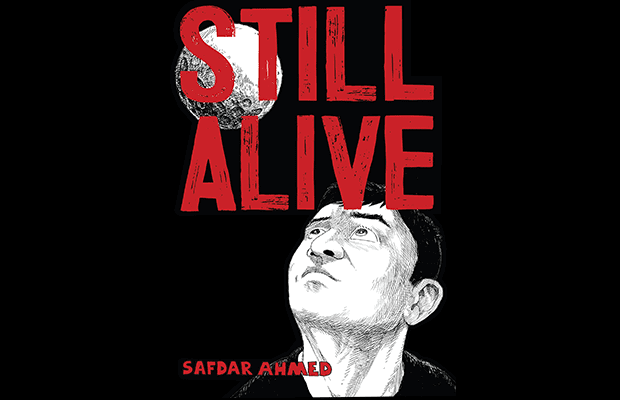When I walked into ENGL1013, Global Literatures in English, I was ill-prepared for the millions of immigrant lives I was about to come eye to eye with. I had never explored the vibrant space of graphic novels; but now, if there is any door I can advocate opening, it is Safdar Ahmed’s transformative comic, Still Alive.
Safdar Ahmed is a Sydney-based artist, writer and activist who is a founding member of the Refugee Art Project. His life and craft are dedicated to showcasing the vulnerable but bright prowess of the immigrant community through the rejuvenative elements of art. Ahmed’s life and work are proof of how comics can serve as a sophisticated medium for journalism, introspection and expression.
Still Alive tears down jail cells and transfers the power of storytelling back to the hands of immigrants through Ahmed’s deeply personal and critical account of the conditions of Australian detention centres. This piece rigorously examines the great lie of inclusivity that continues to scaffold Australia’s multiculturalism and the political figures that perpetuate the ignorant public jargon.
When I type “immigrant” into thesaurus.com, its first synonym is “alien”, followed by “foreigner” and “migrant”. From something as fundamental as language, an agenda of discrimination and disconnection has been planted into our consciousness when we consider immigrant communities. Often the media and politicians perpetuate this narrative by haphazardly replacing lives with numbers and mention of international threat. Ahmed tackles this fallacy head on with his hyperbolic representations of past politicians and their direct rhetoric that demonises and isolates the immigrant community from harbouring a journey to safety including former Minister of Defence, Peter Reiths problematic dogma, “Illegal immigrants can be a pipeline for terrorists to come in and use your country as a staging post for territories activities”. Not only does this rhetoric perpetuate harmful misconceptions but generalises vast ethnocultural groups, family’s seeking safety and the immigrant community with the gravity of isolated terrorist activity. In forthright response, Still Alive vehemently rejects this narrative.
Ahmed further unravels the dehumanisation of immigrants by platforming their stories, both confronting and inspiring, to restore the vibrancy of a multicultural literary community. He achieved this powerful vision through his regular visits to Sydney’s Villawood detention centre. From interviewing the wrongfully imprisoned, to impoverished families to fleers of national persecution, Ahmed collated stories, artwork and conversations with those he met.
Ideas of state discrimination and diasporic agony are masterfully illustrated to form a powerful mosaic of personal testimonies with both Ahmed’s overarching commentary and the immigrant detainees’s unravelling stories. The piece is almost entirely in black and white, arranging jarring blocks of black shades and sharp edges to carve out comic strips. Ahmed platforms immigrant stories and reflections such as the progression of “Haidar’s Journey Capture”, Khadija (pg 57), Amir Taghinia (pg 147), Saeed (pg 178) and Elham (pg 198) using their own written, spoken or visual expression in the strip. Together, a narrative of community struggle and survival forges an immortal literary voice.
Catharsis materialises in many forms. Ahmed offers a canvas to those stripped of their rights to express their multidimensional journey and does so in a profoundly honest way. He shatters the silence that the immigrant community is subject to and in doing so opens more than just literary doors. They are the millions of immigrants he represents and the irrepressible lives fighting to open their own.





